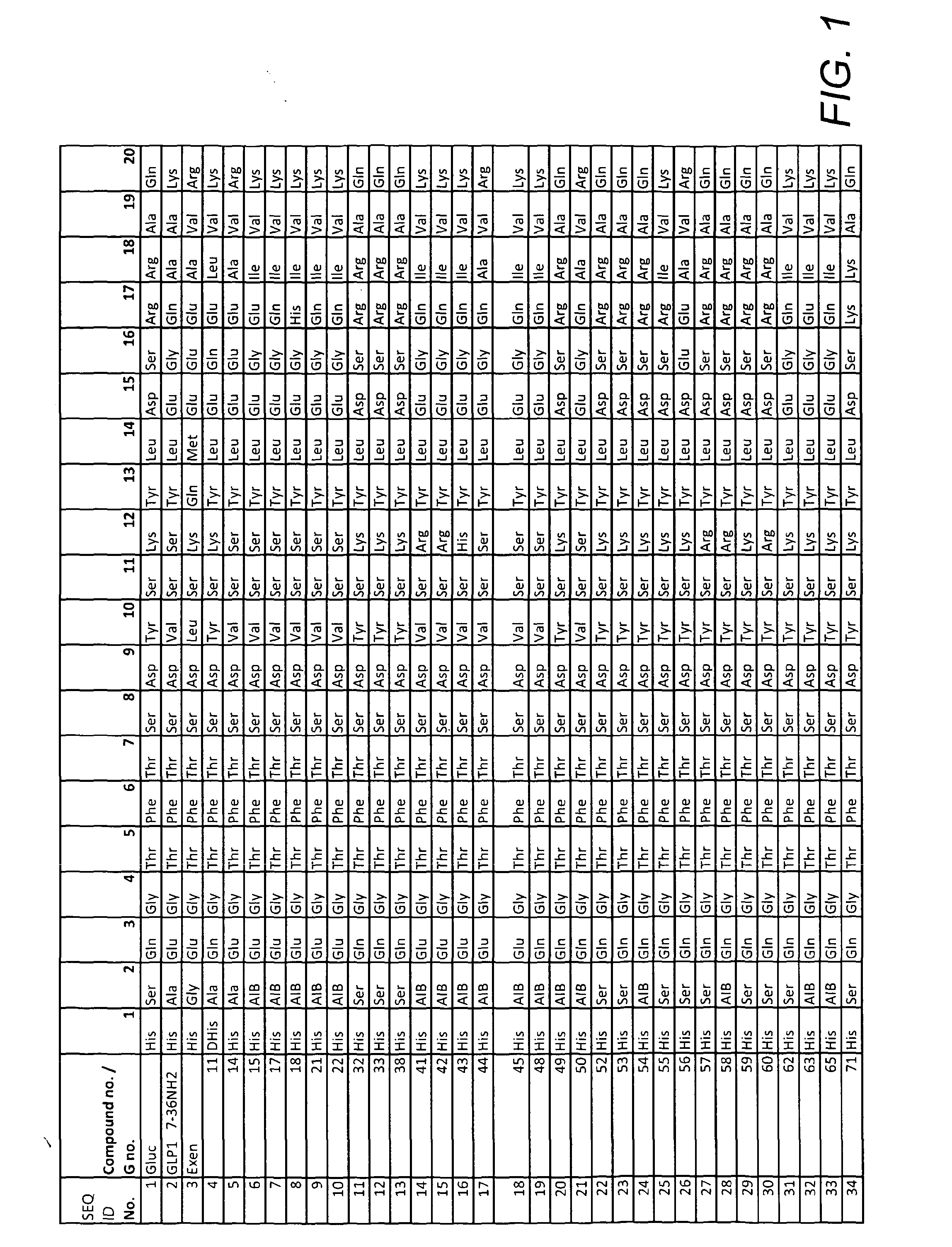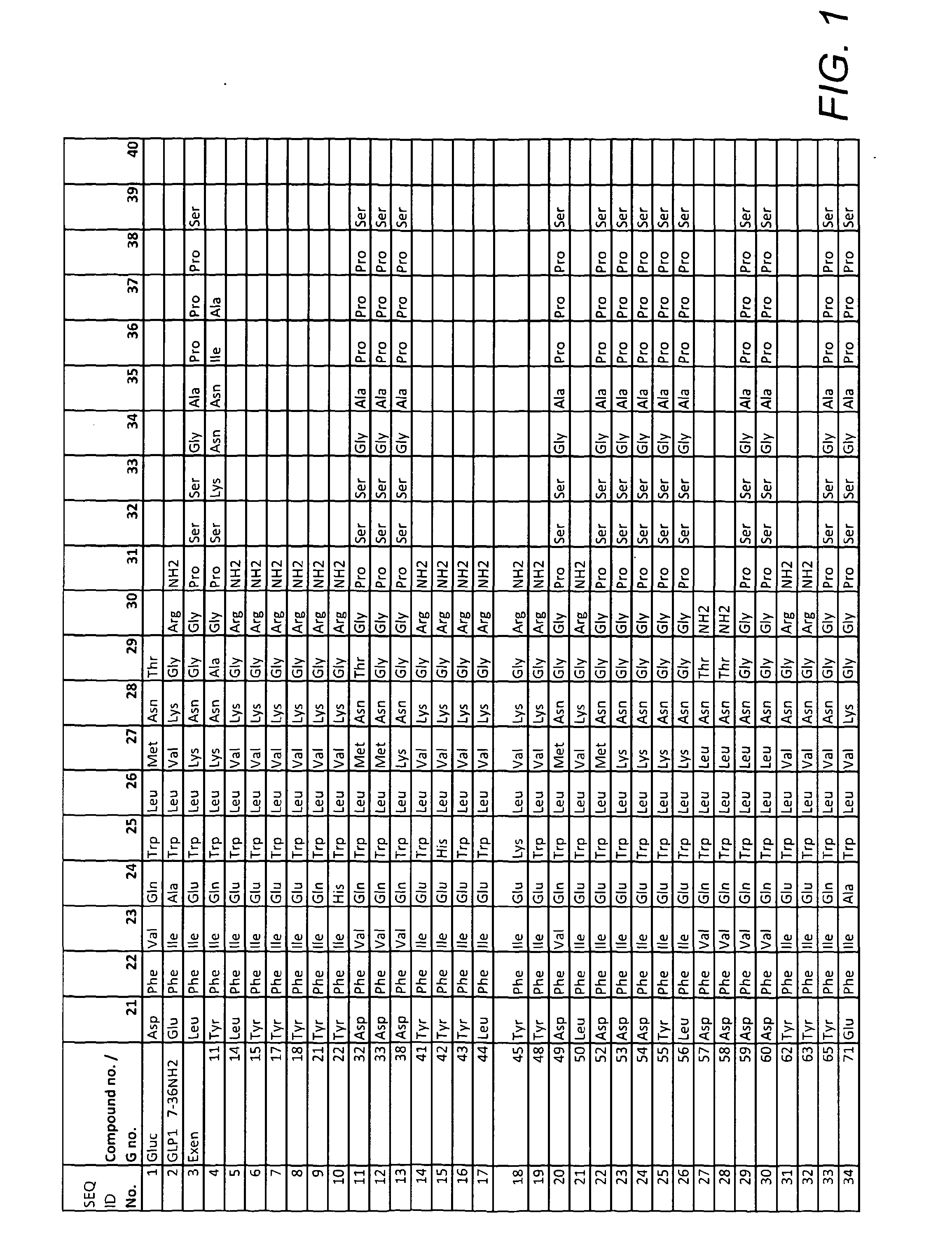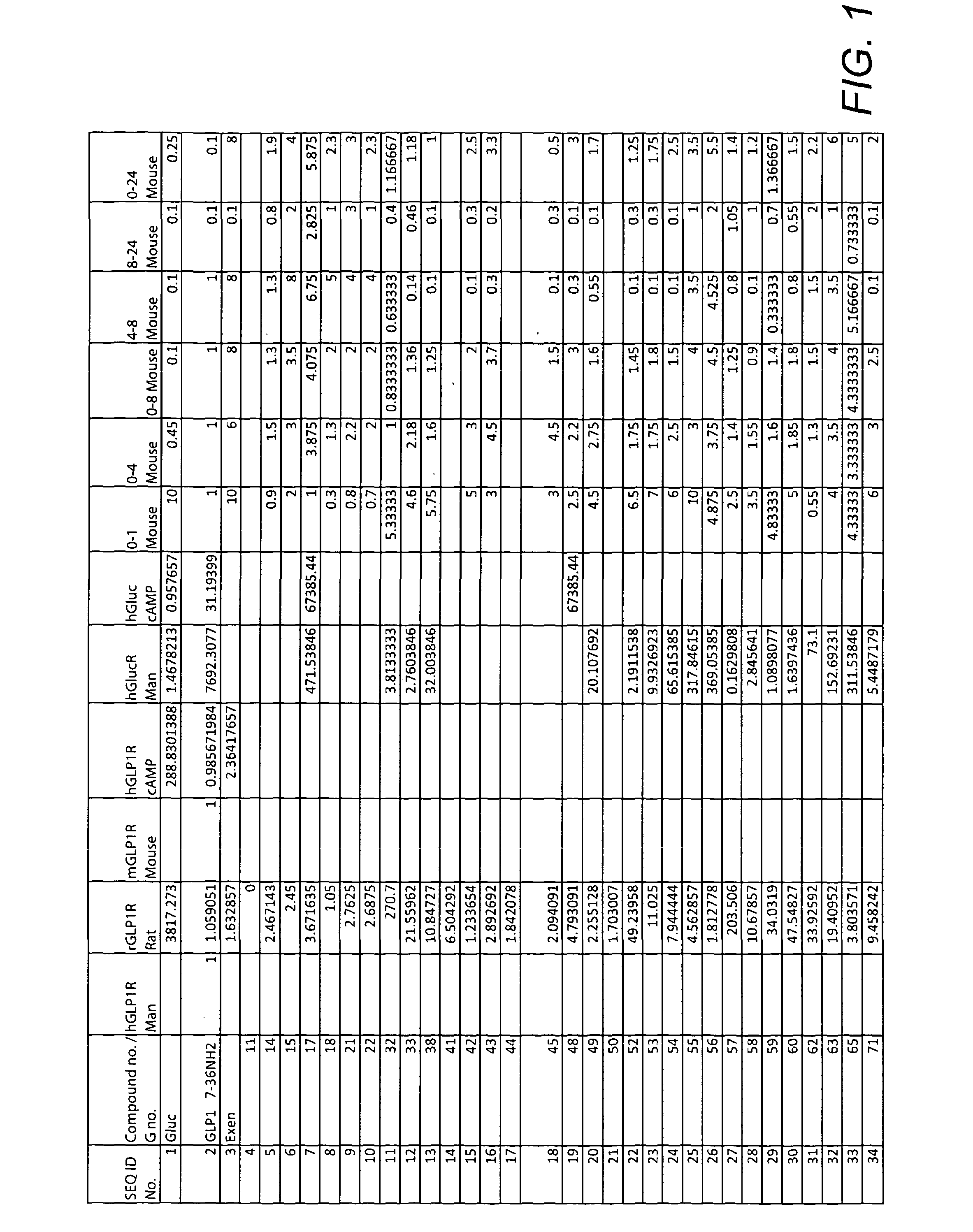Novel compounds and their effects on feeding behaviour
a technology of compounds and compounds, applied in the field of new compounds and their effects on feeding behaviour, can solve the problems of complex and multi-factorial obesity, large percentage of children in the united states are overweight or obese, and obesity is associated, so as to reduce appetite and therefore food intake, prolong the effect of appetite reduction and weight loss
- Summary
- Abstract
- Description
- Claims
- Application Information
AI Technical Summary
Benefits of technology
Problems solved by technology
Method used
Image
Examples
example 1
Acute Feeding Studies in Mice
[0485]Mice were individually housed in IVC cages. Animals were randomised into treatment groups, with stratification by body weight. Mice were fasted overnight (16 hrs) prior to peptide or vehicle administration. All peptide solutions were prepared freshly, immediately prior to administration. The vehicle used for all studies was 5% v / v water and 95% v / v sodium chloride (0.9% w / v). Peptide and vehicle were administered by subcutaneous injection, with dosage corrected for bodyweight. The injection volume was 50 μl. Vehicle or peptide was administered at 09:00 and animals were returned to their home cage with a known amount of food. Food intake was measured at 1, 2, 4, 8 and 24 hours post injection. All statistics are calculated using a one-way ANOVA with Dunnett's post-test or one-way ANOVA with Bonferroni post-test.
Cellular Assays
[0486]Cells (Chinese hamster ovary hGcgR, or Human embryonic kidney hGLP1R) were plated at a density of 150000 cells / ml in 24 ...
example 2
Administration of Compounds to Mice
[0493]Mice were injected with saline or with compound numbers 67, 105, 129, 130, 131, 177 or 181. Food intake was measured at time intervals over 24 hours. The results are shown in FIGS. 2 to 5 show that all compounds tested show a reduction in food intake at least in some time periods and that there is no overall increase in food intake during the first 24 hours as a whole indicating that no “escape” takes place during that period.
example 3
Further Feeding Studies in Mice and Rats
[0494]Further feeding studies in mice were carried out as described above in Example 1 using compound numbers 454, 460, 508, 509, 510, 512, 488, 489, 417, 429, 443, 444, 445, 448, 449, 450, 452 and 453, except that food intake was additionally measured at 32 and 24 hours post injection, and that the peptide was administered with zinc ions. The results are shown in FIG. 6.
[0495]Further feeding studies were carried out as described above in Example 1, using compound numbers 459 (100 nmol / kg), 496 (100 nmol / kg), 497 (100 nmol / kg), 498 (100 nmol / kg), 499 (100 nmol / kg), 500 (100 nmol / kg), 501 (100 nmol / kg), 433 (50 nmol / kg), 471 (3 nmol / kg; 10 nmol / kg; 30 nmol / kg), 488 (3 mmol / kg; 10 nmol / kg; 30 nmol / kg) and exendin-4 (3 nmol / kg; 30 nmol / kg) at the indicated dosage levels, except that the studies were carries out in groups of rats, food intake was additionally measured at 32, 48 and 72 hours, and the peptide formulation contained 1 zinc ion per mol...
PUM
| Property | Measurement | Unit |
|---|---|---|
| pH | aaaaa | aaaaa |
| pharmaceutical composition | aaaaa | aaaaa |
| energy | aaaaa | aaaaa |
Abstract
Description
Claims
Application Information
 Login to View More
Login to View More - R&D
- Intellectual Property
- Life Sciences
- Materials
- Tech Scout
- Unparalleled Data Quality
- Higher Quality Content
- 60% Fewer Hallucinations
Browse by: Latest US Patents, China's latest patents, Technical Efficacy Thesaurus, Application Domain, Technology Topic, Popular Technical Reports.
© 2025 PatSnap. All rights reserved.Legal|Privacy policy|Modern Slavery Act Transparency Statement|Sitemap|About US| Contact US: help@patsnap.com



